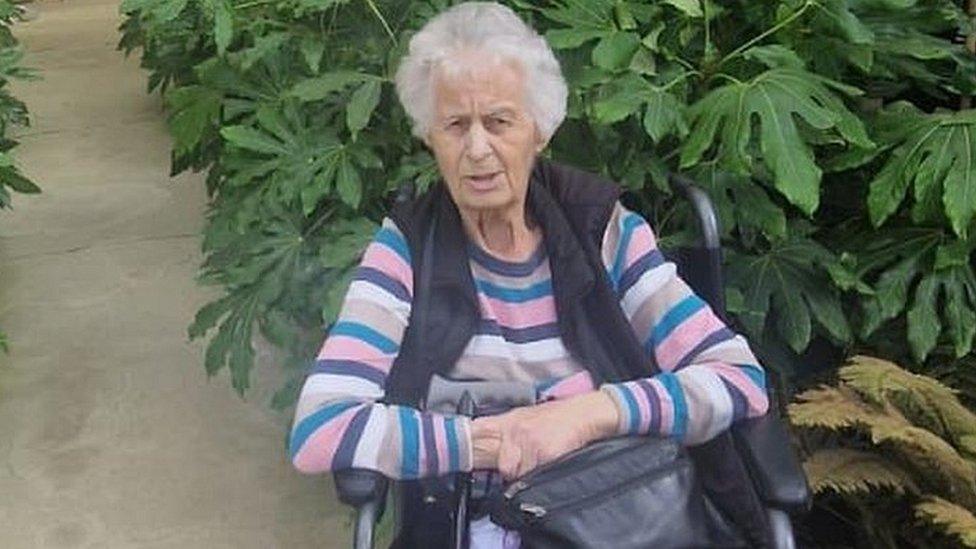A&E queues 'immensely frustrating' - paramedic

Special Practitioner Jon Hall says pressures on the service are growing
- Published
New figures show more than a third of ambulances in Lincolnshire get stuck outside hospitals for longer than half an hour, waiting to hand over patients.
NHS data released on Thursday reveals 43% of the ambulances taking patients to Lincoln and Boston's hospitals wait longer than 30 minutes. The figure for Grimsby and Scunthorpe is 34%.
Lincolnshire paramedic Jon Hall said his colleagues "find it immensely frustrating" they are delayed by long waits outside A&Es.
"Our hands are tied" by hospital queues, he said.
NHS England acknowledged the system nationally was under "considerable strain", but said extra staff had been recruited and beds opened.
BBC News followed Mr Hall on a 12-hour shift, which stretched to more than 14 hours, as he responded to a deluge of 999 calls.
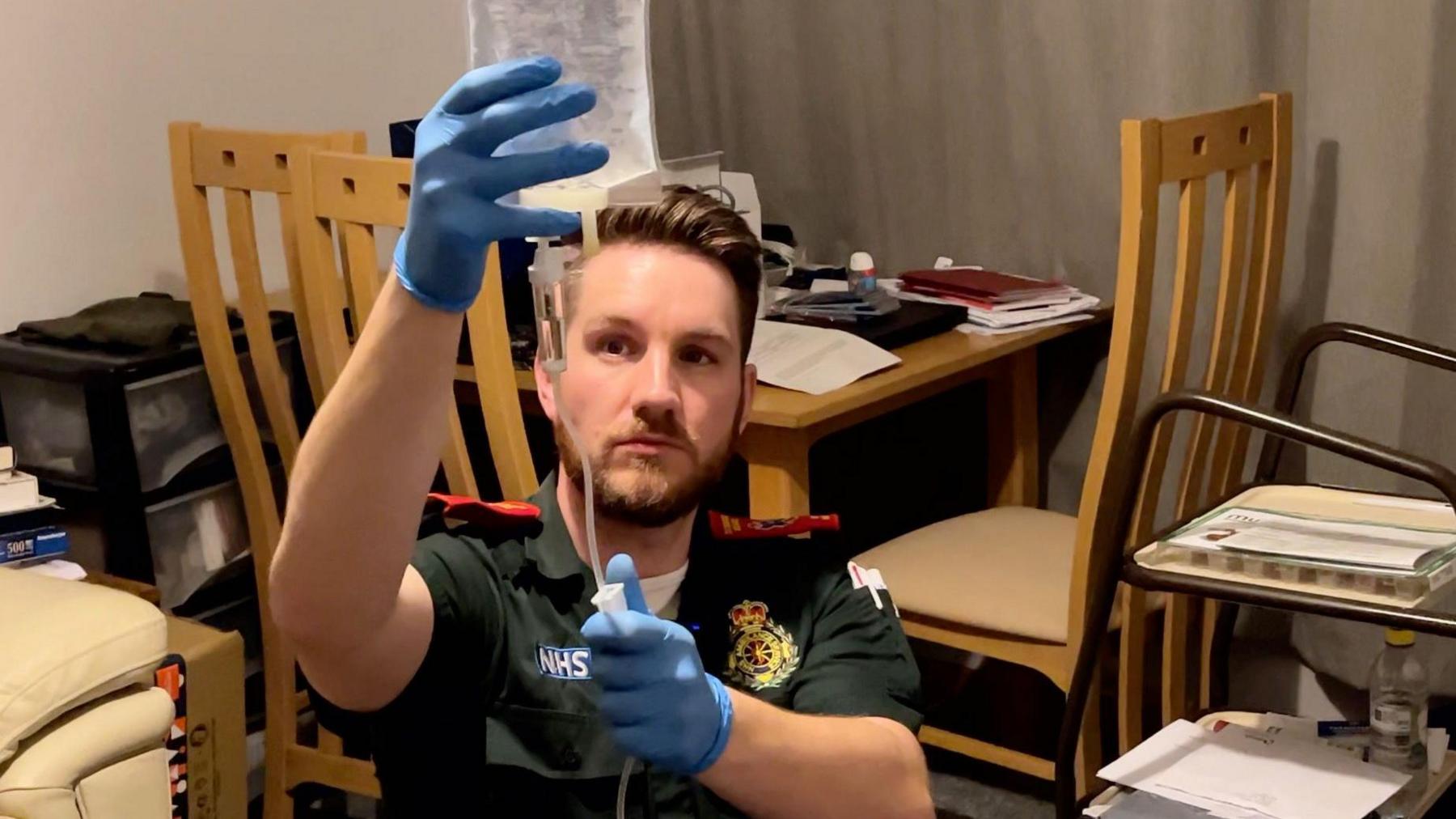
Jon Hall has been trained to give intravenous drugs at patients' homes
Jon Hall arrives at Scunthorpe Ambulance Station before 07:00 GMT to prepare the equipment and drugs he needs on his rapid response car. He has only had about six hours sleep, woken in the night by his twin toddlers.
His first call comes at 07:40 GMT to a patient in his 70s in cardiac arrest. He joins three colleagues, who spend an hour trying to resuscitate the patient, but they are unable to save him.
Only minutes after leaving, his next job is a 98-year-old with a sore throat and a cough, sent through from the NHS 111 service. Asked if that should be dealt with by a GP, Mr Hall says: "It's likely that is what should happen. If it was a younger individual, we'd likely refer them to a pharmacist."
'Pressure starting to climb'
On the way, Mr Hall is diverted to a 78-year-old who has collapsed and is unresponsive. He stabilises the patient, but as he works alone in his rapid response car, he needs to call another crew to stretcher the patient to hospital.
A private ambulance is sent, something Mr Hall says is increasingly common because of the huge demand on the ambulance service.
The next call is 20 miles away; a man in his 50s who has collapsed on a bus after a suspected heroin overdose. Trained to deliver antidote, Mr Hall travels in the back of the ambulance that takes the patient to Grimsby's A&E.
Today, he goes straight in to the Emergency Department, but Mr Hall says his colleagues often face long waits to hand over patients.
"Through the past two weeks, we've noticed the pressure start to climb and waits at hospital start to climb," he says.
"All of our colleagues find it immensely frustrating.
"We don't want people to wait this long, but our hands are tied when you get to hospitals and the queues are there."
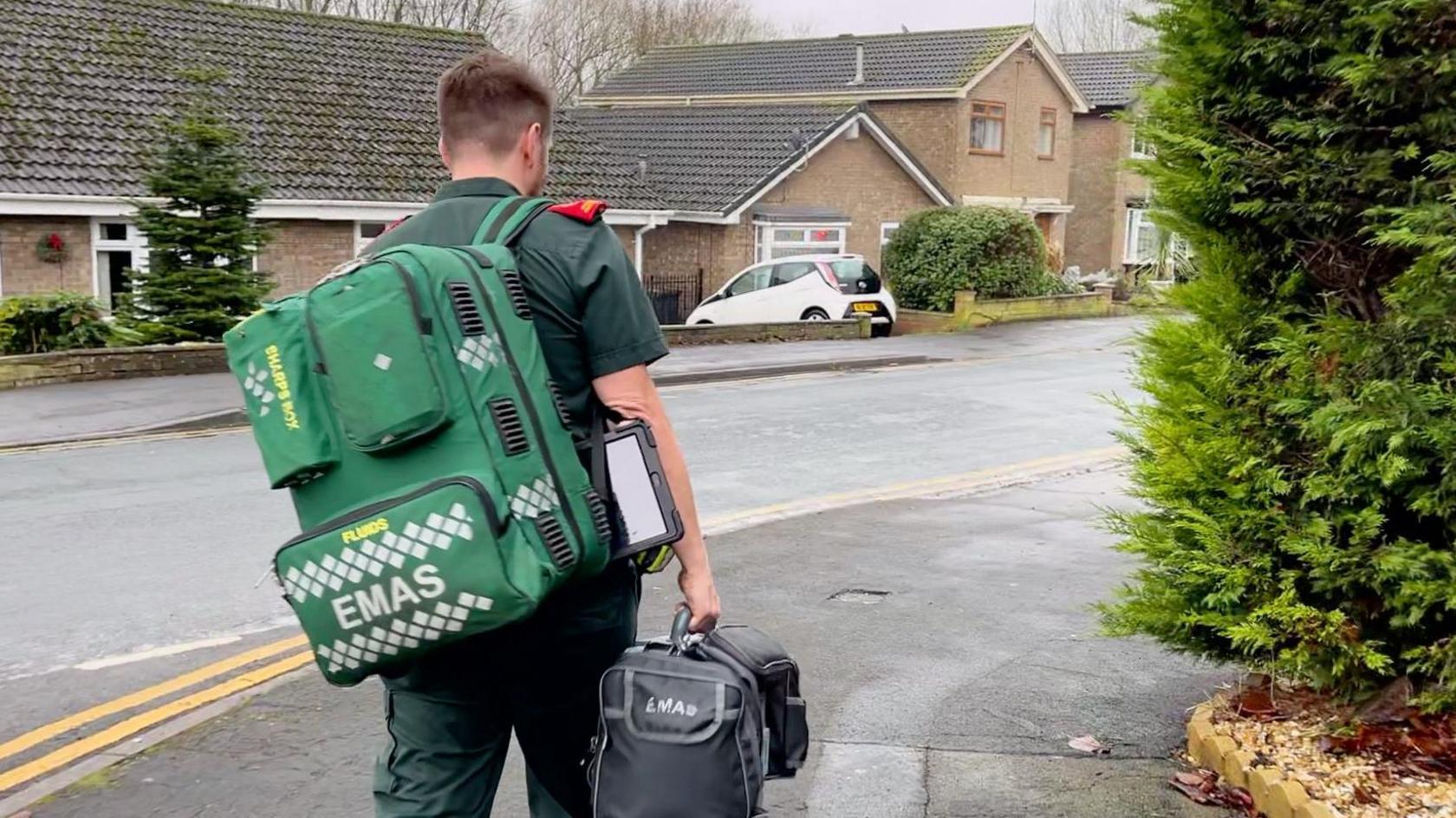
Jon Hall arrives at another emergency call
At 12:57 GMT, Mr Hall should be taking his break, but as he leaves the ambulance bay, he is called to another cardiac arrest.
Three crews arrive within 10 minutes and take over from the patient's granddaughter, who has already started CPR, but this is the second patient Mr Hall and his colleagues are unable to save.
"The teams that we've had today have worked brilliantly to try to deliver gold standard care, so I try to cling onto those things and try not to dwell too much on the personal tragedies we're seeing.
"Ultimately we do that just to try to keep our heads above water."
Mr Hall has not had a break for almost eight hours. He grabs a pastry and coffee and eats them at a desk in the ambulance station as he scans the list of calls coming into the service.
"As we're starting to approach the evening and as the hospital pressure starts to climb, the trust is with about 60 patients in Lincolnshire and then we have about 50 patients who have called 999 or 111 who are waiting for an ambulance resource.
"They end up waiting two, three, four hours, especially if it's a lower priority call.
"We'll call people back to see if they can make their own way to hospital, use urgent treatment centres, GPs, or pharmacies, to try to reduce pressure on hospitals that way."
Another strategy used by East Midlands Ambulance Service is training some paramedics, like Mr Hall, to a higher level.
These Specialist Practitioners are able to stitch wounds, give intravenous drugs and fluids and provide end-of-life care.
They want to prevent those patients needing to be taken to A&E, so more ambulances do not get stuck in queues outside hospitals.
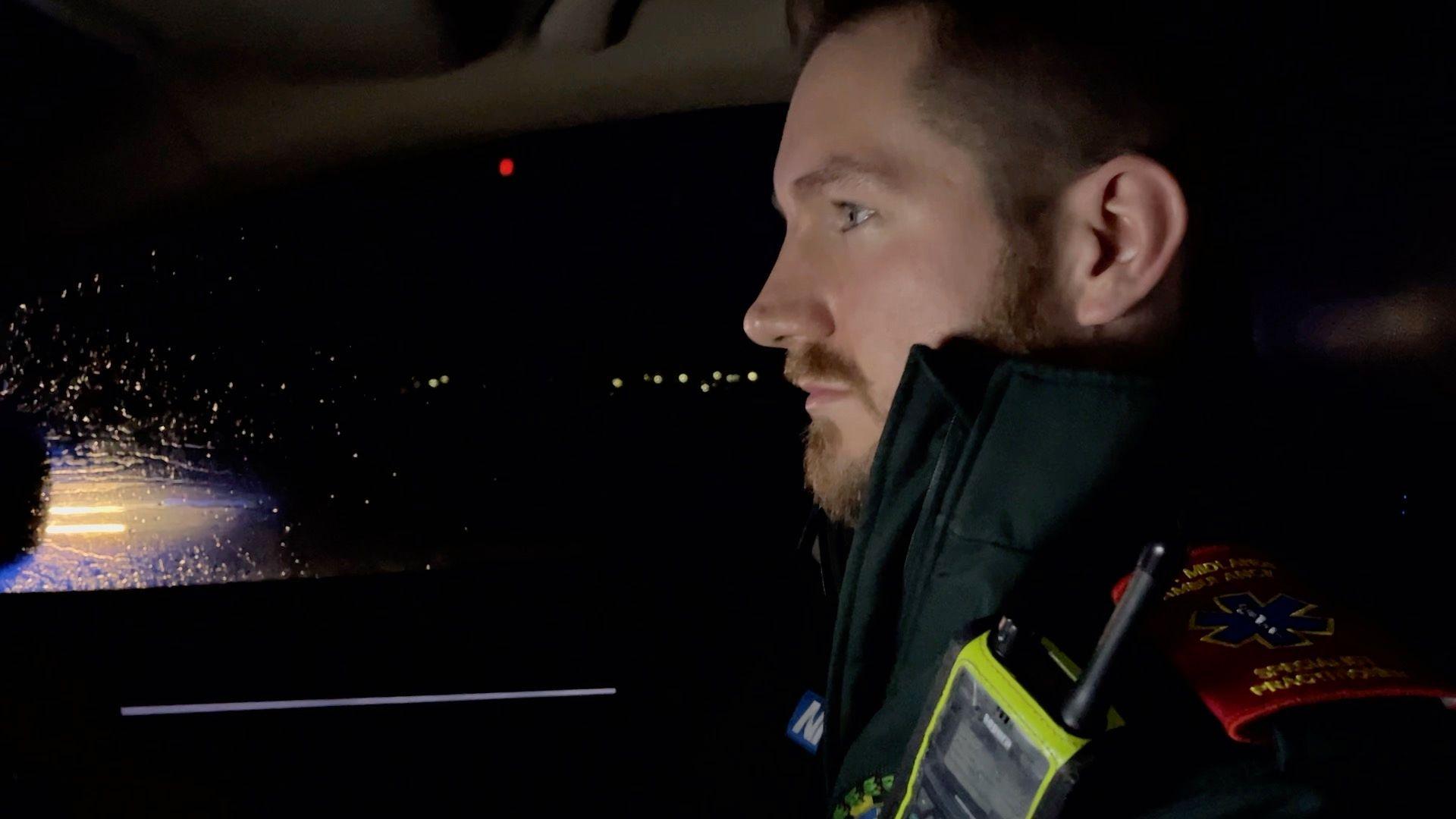
Jon Hall works two hours beyond his shift
East Midlands Ambulance Service said since 2020, 3,372 patients had been prevented from needing hospital admission, because they had been treated at home by a Specialist Practitioner.
Its latest response times (November 2023) show an 11-minute improvement, on average, in reaching Category Two calls.
Mr Hall's final call of the day is to a patient with low blood pressure and a history of heart failure, referred to the ambulance service by a community practitioner.
Mr Hall is able to give intravenous fluids, but the patient still needs to go to hospital.
Diverted to another emergency en-route, it takes two hours for a double-crewed ambulance to arrive.
Mr Hall finally makes it back to base after 21:00 GMT, less than 10 hours before he is due to start his next shift.
- Published14 March 2024

- Published10 January 2023
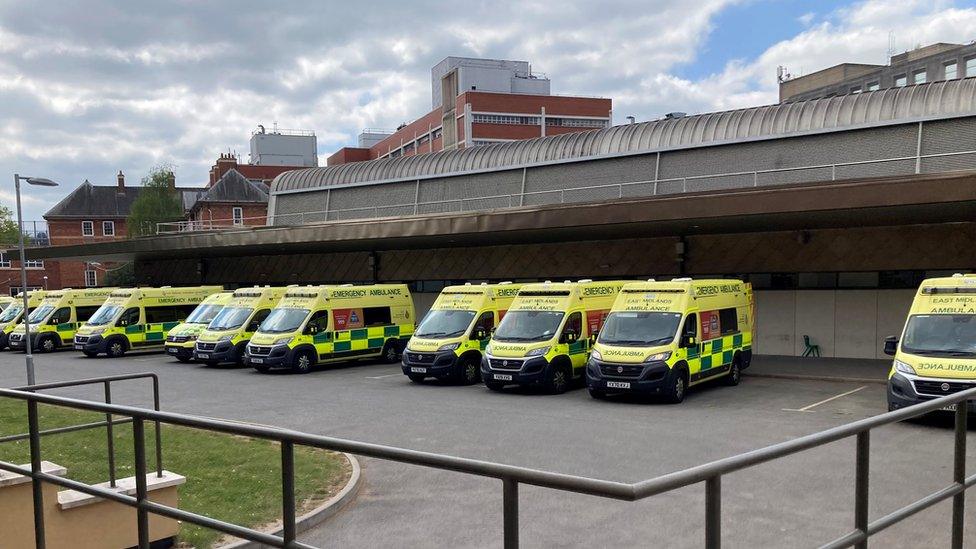
- Published10 January 2023
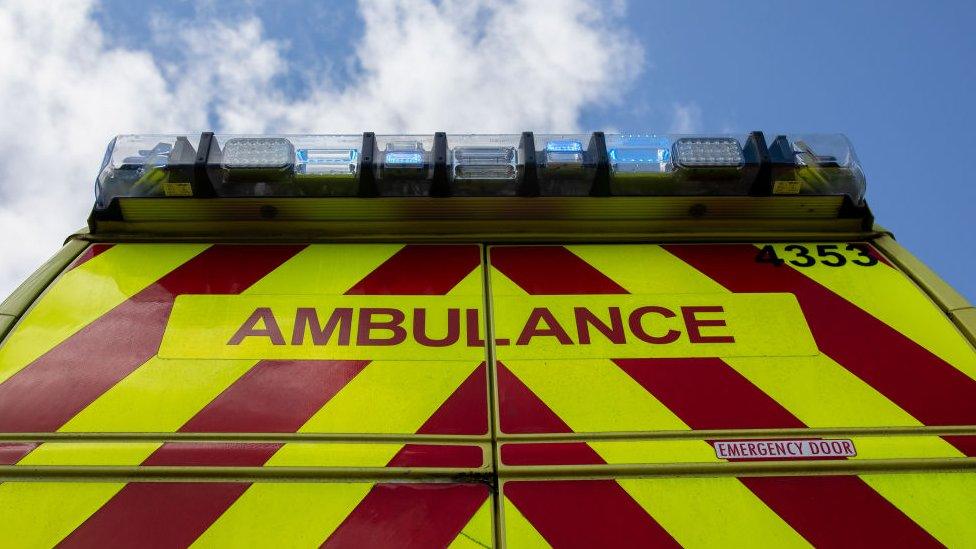
- Published25 September 2023
